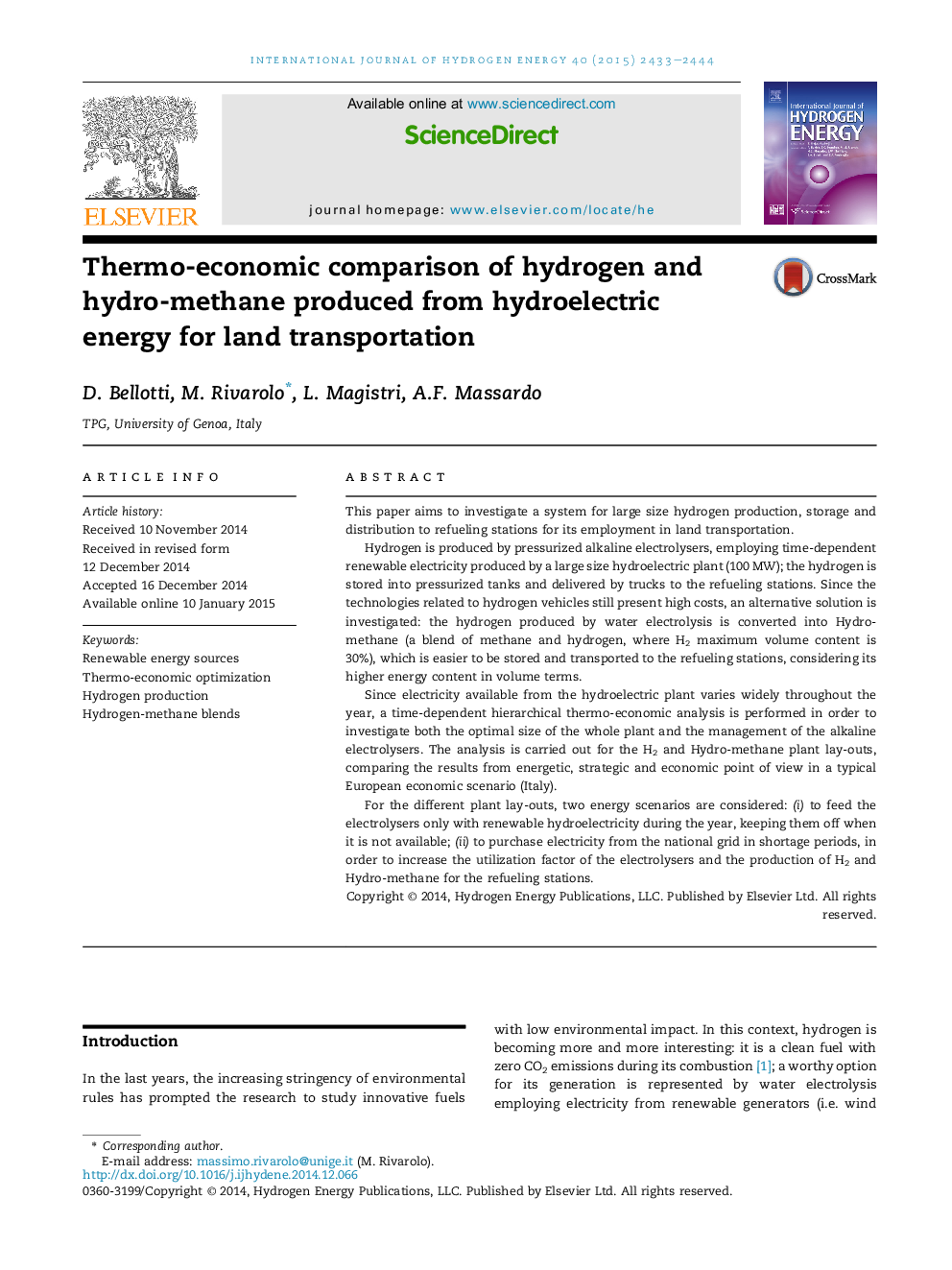| Article ID | Journal | Published Year | Pages | File Type |
|---|---|---|---|---|
| 1270009 | International Journal of Hydrogen Energy | 2015 | 12 Pages |
•We investigate H2 production from hydroelectricity by water electrolysis.•We consider H2 conversion in chemical reactors to produce hydrogen-methane blends.•We perform a time-dependent thermo-economic optimization of different configurations.•We compare the large scale diffusion on land transportation for H2 and hydro-methane.•We find plants optimal size using a time-dependent thermo-economic approach.
This paper aims to investigate a system for large size hydrogen production, storage and distribution to refueling stations for its employment in land transportation.Hydrogen is produced by pressurized alkaline electrolysers, employing time-dependent renewable electricity produced by a large size hydroelectric plant (100 MW); the hydrogen is stored into pressurized tanks and delivered by trucks to the refueling stations. Since the technologies related to hydrogen vehicles still present high costs, an alternative solution is investigated: the hydrogen produced by water electrolysis is converted into Hydro-methane (a blend of methane and hydrogen, where H2 maximum volume content is 30%), which is easier to be stored and transported to the refueling stations, considering its higher energy content in volume terms.Since electricity available from the hydroelectric plant varies widely throughout the year, a time-dependent hierarchical thermo-economic analysis is performed in order to investigate both the optimal size of the whole plant and the management of the alkaline electrolysers. The analysis is carried out for the H2 and Hydro-methane plant lay-outs, comparing the results from energetic, strategic and economic point of view in a typical European economic scenario (Italy).For the different plant lay-outs, two energy scenarios are considered: (i) to feed the electrolysers only with renewable hydroelectricity during the year, keeping them off when it is not available; (ii) to purchase electricity from the national grid in shortage periods, in order to increase the utilization factor of the electrolysers and the production of H2 and Hydro-methane for the refueling stations.
